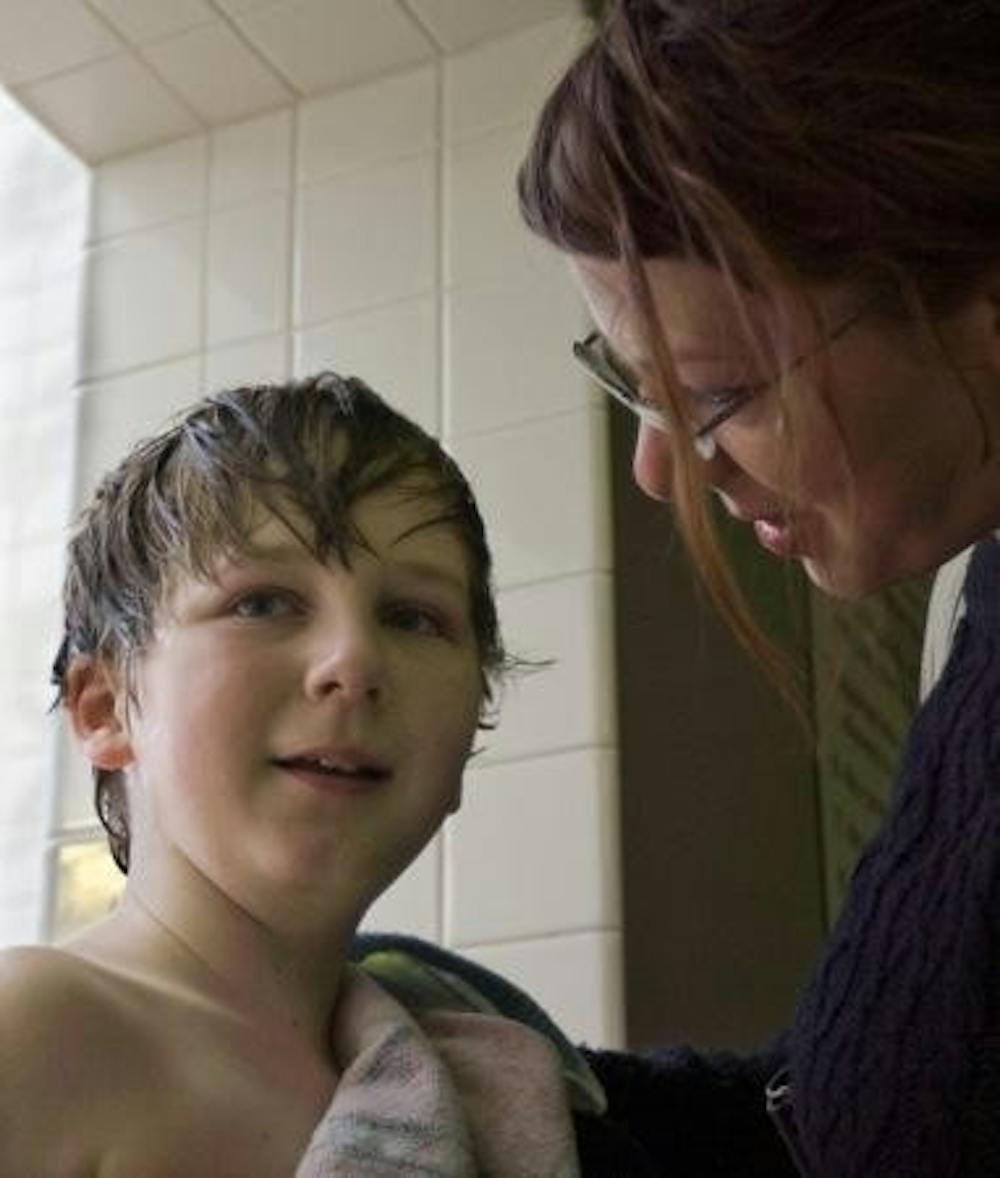On one of the first warm days of spring, Ezra Robinson, 11, bounces a blue four-square ball off the asphalt of Clear Creek Elementary School’s playground. The sun shines, a cacophony of children’s voices fill the air, and Ezra begins his retreat from the swarms of other children on the playground. He plays alone to avoid engaging with his peers.\nEzra began exhibiting signs of autism when he was roughly 2 years old and has since been diagnosed in the middle of the autism spectrum.\nLike most children his age, Ezra has a demanding schedule outside of school, but it isn’t filled with soccer practices or piano lessons. Instead, he goes to speech and occupational therapy (OT) each week. Ezra is Kristi Robinson’s only child. At first, she thought he was developing normally, but subsequent trips to the pediatrician and speech therapist confirmed Ezra’s diagnosis of mid-spectrum autism. Autism is a spectrum disorder, ranging from low to high function.\n“Before he was about 18, 19 months, he had a handful of words; he was doing all the things he was supposed to,” Kristi said. “Then, he just stopped doing those things. He started screaming when he wanted something. He wouldn’t use the word anymore. I knew something wasn’t right.”\nWhile Ezra’s family involves him in speech therapy and OT – which have made a great difference in his level of function – Ezra’s diagnosis was difficult for Kristi.\n“I initially blamed myself,” she said. “I don’t really feel like that anymore. I feel like he had a really good childhood. He was healthy, and he was happy.”\nAlthough Ezra and his family must find ways to counter his diagnosis, Kristi focuses on his capabilities instead of finding a label for him. Kristi said many labels about people with autism include being non-verbal or non-communicative.\n“When people meet Ezra, they’ll often ask me where he is on the spectrum,” she said. “It doesn’t matter to me where he is. He’s just my kid, and unless he’s around other kids, he doesn’t seem different to me.”\nWhile it might be possible to avoid the labels associated with autism, the frustrations and debilitations associated with autism are real. Ezra has speech therapy and OT twice a week, which improve skills that autism inhibits.\nIn speech therapy, he learned to use speech and sound as a way of communication. Originally, his ability to make just a sound was progress in his communication skill. Now, Ezra is able to use words to communicate with his family and his peers.\n“The challenge is in getting him to understand the purpose of language, to share ideas, to express interest,” Kristi said.\nEzra can speak and ask or answer questions, but social interaction often inhibits and over-stimulates him. Part of the OT he receives deals with those social sensory issues. Ezra’s stepfather Andrew Dabrowski views Ezra’s therapy as an opportunity for Ezra to engage with other people.\n“If nothing else, it is just good for him to have interaction with people outside of the family,” he said.\nEzra’s adapted aquatics instructor Kevin Thompson incorporates social interaction with swimming.\n“He really does need consistency and someone he can develop a rapport with,” Thompson said. “His interactions and social skills have improved a lot over the last year.”\nAlthough Ezra has autism, he continues to function at the level of his peers in many ways. He is in class with other children his age. He goes bike-riding and bowling with his family on weekends.\n“He’s very spontaneous,” Dabrowski said. “He doesn’t worry what other people are going to think. He tends to live more in the moment than most kids.”\nWhile therapy and treatment are important, Kristi doesn’t define her son by the disorder he has.\n“I like the person that he is,” she said. “More and more, people who have been locked in this silent world because they’re non-verbal are coming out and saying, ‘I’ve been listening; I’m present; I just don’t act like you do, and that’s OK.’”
Bloomington boy must make ongoing effort to connect, communicate

Get stories like this in your inbox
Subscribe





